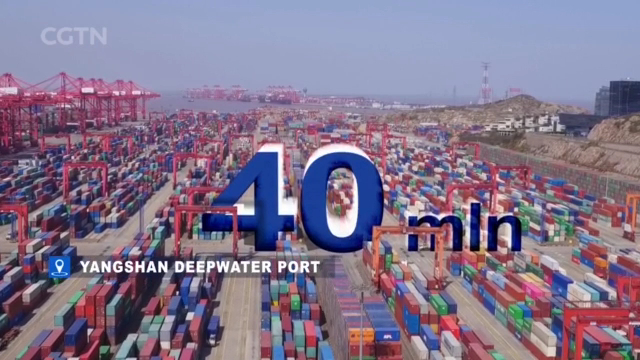
13:31, 16-Apr-2019
China's Free Trade Zones: Facilitators of trade and investments along the belt & road
Updated
13:30, 19-Apr-2019
02:24

Now to news from China. A major initiative that the Chinese government launched in the past few years has been the free trade zones. These areas across the country are aimed at providing policy supports to facilitate trade and investments. Our reporter Yang Chengxi explains some of the achievements of the free trade zones.
China now has 12 free trade zones. The mechanism started six years ago here, in Shanghai. Across the river, one finds Lujiazui, the heart of China's financial industry. This is where business and financial transactions concerning belt and road economies are most active in the city. In 2018, companies in the free trade zone invested some 300 million US dollars along the belt and road region. Appetites for Chinese investors are increasing from these countries. Companies from economies such as Malaysia, Russia and Hungary have issued RMB-denominated bonds, or the so-called 'panda bond' in China.
From free trade zones to free trade ports. I am at one of the busiest ports in the world, the Yangshan. Over 40 million containers pass through here every year. Under new measures, all custom clearance procedures can be applied and processed on one platform called the single window. New hardwares are also installed at the latest phase four area, where customs inspections can be done right at the port. Today, trade companies can expect clearance time to go down from one day to two hours.
China is launching its first free trade port in its southern most province, Hainan, the island sometimes referred to as "China's Hawaii". As the nation experiments with new trade facilitation measures, promoted across FTZs, experts see a brighter future for trade prospects with belt and road economies. Data shows that China's trade volume growth with these countries has risen faster than overall trade growth since 2016.
As a result, consumer goods from all of these major trade partners along the belt and road region are finding it easier than ever to enter the Chinese market.
This place was set up after the first China International Import Expo in 2018 which showcased specialty products from various countries. These brands from belt and road economies are eager to tap into the massive Chinese market, and those who benefit at the end of the day, are the ordinary people.

SITEMAP
Copyright © 2018 CGTN. Beijing ICP prepared NO.16065310-3
Copyright © 2018 CGTN. Beijing ICP prepared NO.16065310-3